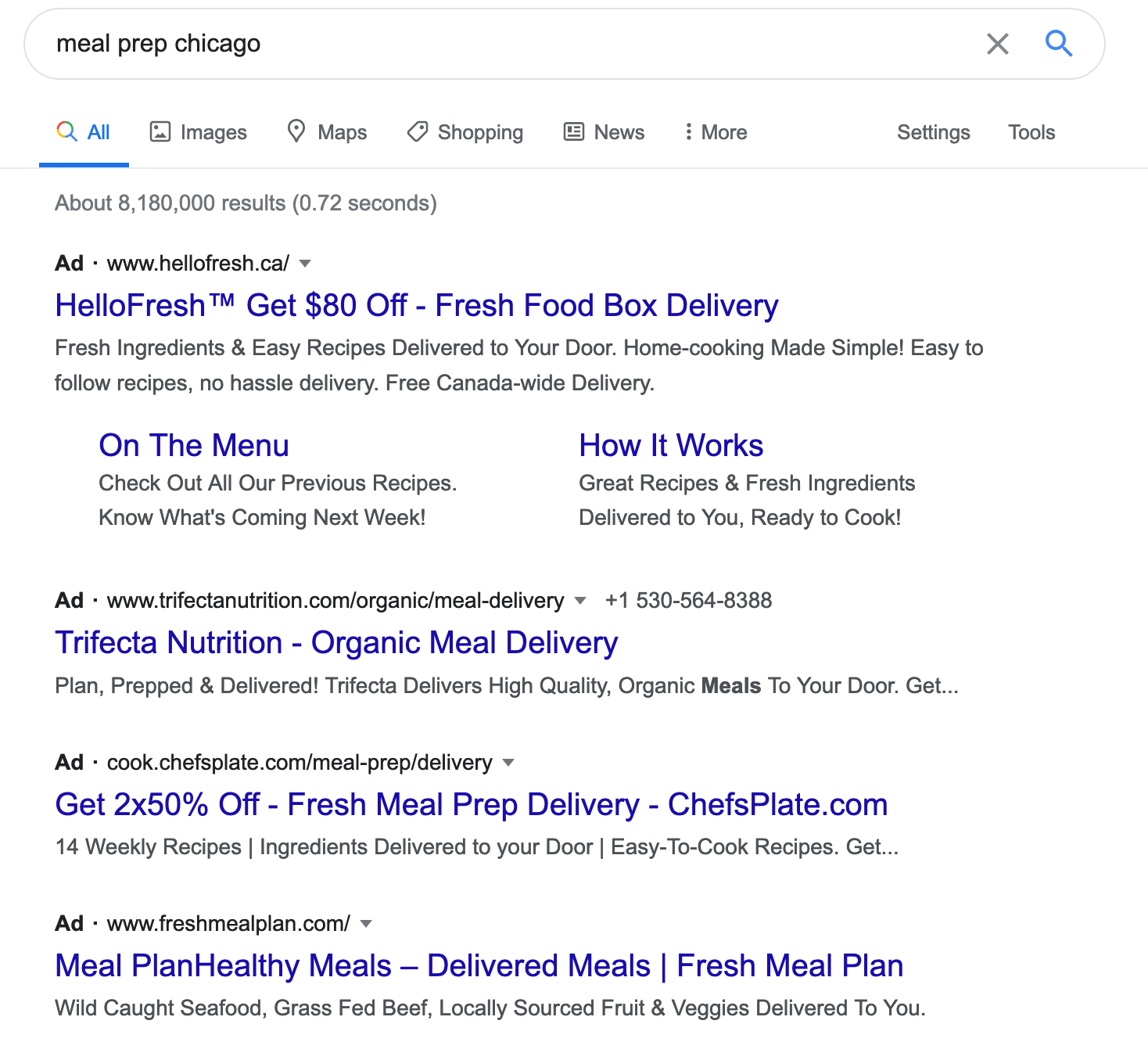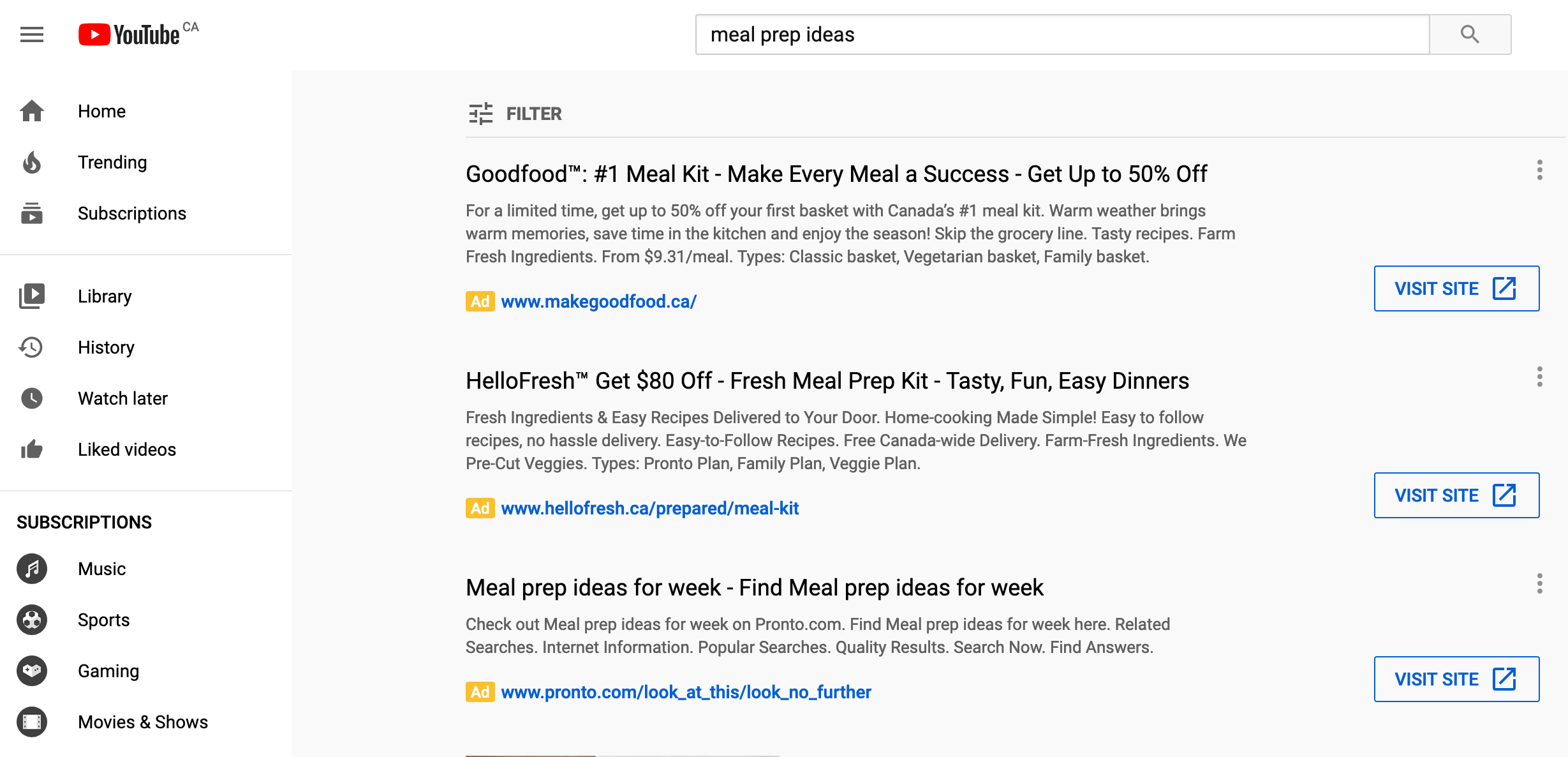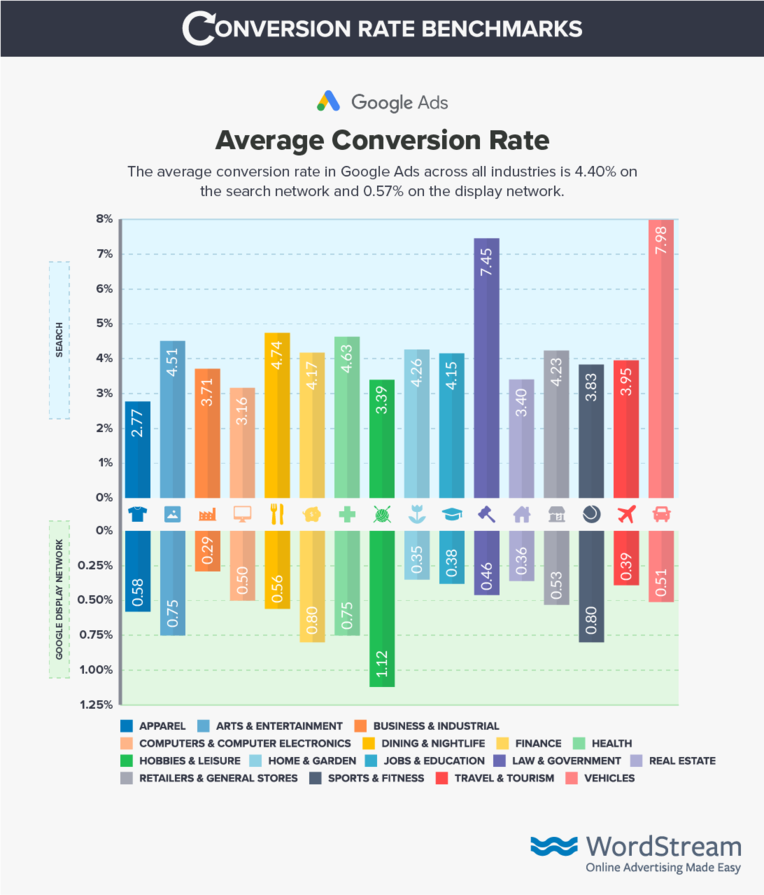It’s estimated over 85,000 Google searches happen every second.
Let that number sink in.
That’s 7.3 billion searches every day.
Most days, you and I replace that flashing cursor inside the Google search box with a string of words that we think of in our heads. We then pick from a list of results offered up by Google. Some of those results we see are paid ads.
From early-stage startups to Fortune 50 companies, Galactic Fed has helped several clients grow exponentially through paid media, making us experts when it comes to Google Ads.
So what exactly is Google Ads, and how does it work? In this article, we will teach you how Google Ads work and how using Google Ads effectively can help you engage customers and grow your business.
What is Google Ads?
Nearly 20 years ago, and shortly after we began to ‘google,’ Google Ads (formerly AdWords) was born. In addition to pointing you to businesses based on what you search for, for free, Google directs you to businesses via sponsored links visible above your search results:

Ads can show up in other places online too; on YouTube and Google’s Display Network:

Businesses create ads and bid in an online auction for the keywords they want those ads to appear alongside. For example, a meal prep company based in Chicago might bid on the phrase ‘meal prep Chicago.’ When someone searches the internet using those words with Google, they will see the meal prep company’s ad above their search results. The meal prep company only pays when someone clicks on the ad, known as pay-per-click (PPC.)
Wait, an online auction?!
An online auction sounds a lot more daunting than it is. In layman’s terms, it’s the process of what happens with each Google search to decide which ads will show up for that keyword and in which order those ads will appear on the search results page.
Keywords matter
Having highly relevant keywords in the ads makes it possible to win a higher position on the search results page at a lower cost than your competition’s bid.
It’s also important to note that the auction process repeats for every search on Google. Taking part in an auction one day can produce different results from the next, depending on your competition.
Whether on a desktop or mobile, most people use 3 words when they google:

Source: Moz
It’s essential to keep this in mind when researching keywords and preparing to launch a Google Ad. Your keyword strategy should capture all of the primary and secondary keywords you want to target and how you plan to target each one, now, and further down the line.
What’s PPC?
Pay-per-click (PPC) is an online advertising model used to drive traffic to websites. Advertisers pay for each click made by someone on their ad.
Google (and many others like Facebook, LinkedIn, and Twitter) use PPC.
Google Ads gives you the ability to stay within a monthly spending cap. It’s also possible to pause or even stop your ad at any point in time if you need to. Whatever the size and scope of your business and the resources available to you, rest assured you can create compelling ads that fit your budget.
Your Quality Score
Similarly to your bank reviewing your credit score when applying for a loan, Google looks at your Quality Score (QS) when deciding how your ad should rank on a search results page.
Your Quality Score (QS) consists of 5 elements:
- how relevant your ad copy is
- how relevant each of your keywords is to its ad grouping,
- the quality of your landing page,
- your click-through rate (CTR,) and
- the performance of your Google Ads account.
Don’t worry if your Quality Score isn’t great; you can take steps to improve it. Galactic Fed has a lot of experience improving quality scores, and we know the power it yields when it comes to reaching more customers.
Crafting an effective Google Ad
When creating a Google Ad, make sure your copy is simple, straightforward, and transparent. Your ad should reflect your brand, style, and voice. What problem does your product or service solve for your customer? Answering this question in your ad copy and focusing on your customer will help make it impossible not to click.
The power of your landing page
Great news, a potential customer has clicked on your ad! Now what? The landing page your ad takes someone to is as important as the ad itself. You want to convert people who click on your ad into customers to increase sales. In addition to this, Google takes note of how many people you convert from clicking on your ad, which can help improve your ranking position within search results.
To fine-tune your landing page, make sure to include:
- A clear call to action – what you want people to do and why.
- An image or photo – that’s relevant and represents your brand.
- Simple and straightforward language – so it’s accessible to as many people as possible.
- A fast loading time – test your landing page speed and ensure it loads quickly, on desktop and mobile.
Your click-through rate (CTR) and conversion rate (CVR)
Your click-through rate (CTR) is the number of clicks on your ad as a proportion of your ad’s exposure.
Here’s a formula for calculating your CTR:
CTR = [ click-throughs / impressions ] x 500
If 500 people see your ad and 25 people click through to learn more about your product or service, the CTR on your ad is 5%.
A higher CTR means a higher quality ad that better matches search intent and targets relevant keywords. The average CTR for an ad on search is 3.52%, across all industries.
Your conversion rate (CVR) is the number of people who submit a form as a proportion of people who view your landing page.
Here’s a formula for calculating your CVR:
CVR = [ conversions / impressions ] x 500
If 500 people see your landing page from your Google Ad and 25 of them submit a form, your CVR is 5%.
CVRs varies by industry, with the average across all industries at 4.40% with ads placed on search and .57% for ads placed on the Google Display Network:

Source: WordStream
For more Paid Media term and phrases, check out our Paid Media 101: Glossary
Google’s Display Network (GDN) vs. search ads
It’s worth mentioning Google’s Display Network (GDN) and the difference between placing ads through GDN and search. Google’s Display Network (GDN) makes it possible to place ads on specific websites. You would typically use this type of ad for brand awareness and prospecting. On the one hand, the average conversion rate is a lot lower on GDN because you’re targeting people who aren’t familiar with your brand. On the other hand, you get a lower cost-per-click, and there’s less competition when it comes to bidding for keywords.
How effective are Google Ads?
The numbers speak for themselves when it comes to the return on investment of using Google Ads. Google states the value of Google Ads is $2 for every $1 spent. In addition, research shows Google Ads helps people find what they are looking for online. Clutch explains one-third of people click on a paid search ad because it directly answers their search query, and 75% of people say paid ads make it easier to find the information they are searching for.
It’s not a question of if, but how
With a staggering 96% of brands spending money on Google Ads, it’s a question of how Google Ads work most effectively, rather than a choice of deploying them at all.
By investing in a keyword strategy, your Google Ads can better match search intent and win out over your competitors. Your Google Ad copy, your landing pages, your CTR, and your Google Ads account’s performance significantly impact your Quality Score. Focusing on improving your QS can lead to your ads performing better, helping you reach new customers online.
Looking to take your Google Ads to the next level or have any other questions about how Google Ads work, Galactic Fed can help. Contact us to reach more customers online through Google Ads and drive your business’s growth.

